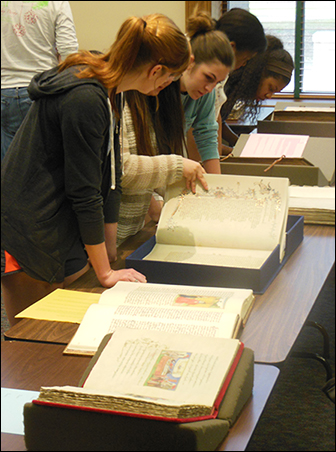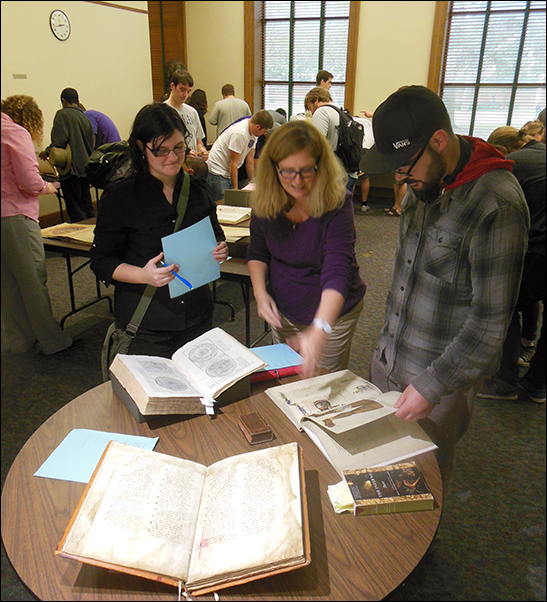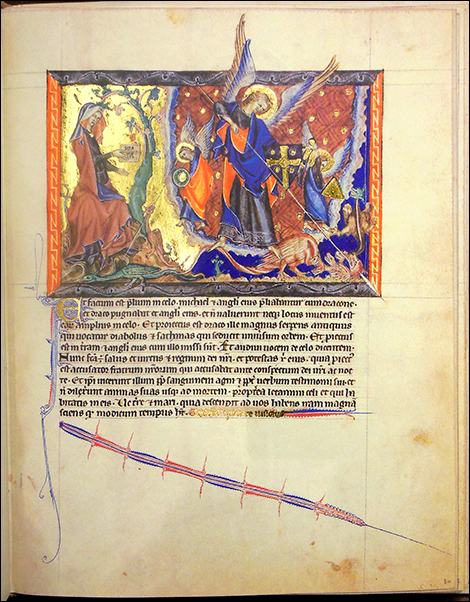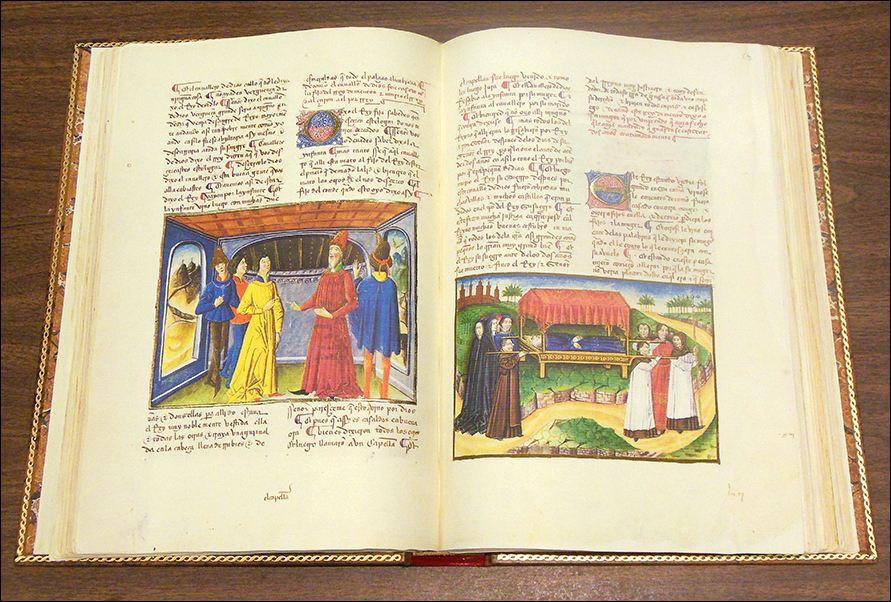Bringing the Middle Ages to life in Special Collections
 Special Collections has seen a record-breaking number of class visits this semester. Several of those classes, including Professor Maribel Dietz's course on the Late Middle Ages, came to use our large and growing collection of medieval manuscript facsimiles.
Special Collections has seen a record-breaking number of class visits this semester. Several of those classes, including Professor Maribel Dietz's course on the Late Middle Ages, came to use our large and growing collection of medieval manuscript facsimiles.
The materials on display ranged from Bibles and other religious texts to epic poetry, chivalric romances, medical and scientific books, and even a book on fashion.
"My history classes focus on understanding the primary sources, but we experience those sources as translated and edited texts," Professor Dietz commented. "I want the students to understand how the texts were preserved and transmitted to us, plus I want them to get a feel for the format and look of medieval manuscripts. We study much about the growth and spread of monasticism and most of these manuscripts were produced in monasteries. This semester we studied the French king, Louis IX and his mother Blanche of Castile — it was great to have the students study a facsimile of one of the many manuscripts they commissioned. My students had also studied the Holy Roman Emperor Frederick II and learned about the book he himself wrote on the art of hunting with birds, the facsimile of which is also in Special Collections."
 One student in the group was surprised at the books' size, whether big or small, and how colorful many of them were. "We don't get a sense of that by seeing them reproduced in a textbook or in a slideshow. The things we are studying really come to life now. The Middle Ages don't seem so dark anymore!" Another student commented that even though many of the manuscripts are available online, the digital versions do not fully convey their physical aspects. "I really enjoyed getting to turn the pages and experience what it must have been like for someone in the Middle Ages to use books like these, especially the ones with gold illumination. The online versions just aren't the same."
One student in the group was surprised at the books' size, whether big or small, and how colorful many of them were. "We don't get a sense of that by seeing them reproduced in a textbook or in a slideshow. The things we are studying really come to life now. The Middle Ages don't seem so dark anymore!" Another student commented that even though many of the manuscripts are available online, the digital versions do not fully convey their physical aspects. "I really enjoyed getting to turn the pages and experience what it must have been like for someone in the Middle Ages to use books like these, especially the ones with gold illumination. The online versions just aren't the same."
Also on display were facsimiles of two 14th-century Dante manuscripts, as well as two early printed editions of the Divine Comedy, including a 1596 "pocket" edition and one with extensive illustrations and commentary published in 1578. "Students were really excited about the Dante material, since we have just begun to read his Inferno for class," Dietz said. (For more on Dante, see our recent post.)
Jessica Lacher-Feldman, Head of Special Collections, added: "Putting students in contact with rare books and archival materials helps them develop critical-thinking skills and understand the importance of primary source research. The sheer number of class visits we have had lately, from a broad range of disciplines, also speaks to the multitude of strengths in our collections and our vital importance to the campus community. It's a win-win experience for everybody!"
Thanks to a generous endowment left by the late Mary Garrett Hauer of the LSU School of Library & Information Science, we are able to purchase several new facsimiles for the collection every year. Recently, we added some Byzantine manuscript facsimiles, including a 10th-century scroll illustrating scenes from the Old Testament Book of Joshua, the Byzantine Epigrams and Icons of John Euchaita, and the Chludov Psalter, one of the most important sources of early Byzantine art.
For a complete list of the library's holdings in this area, see the inventory of Medieval & Renaissance Manuscript Facsimiles. And feel free to contact us with questions or to arrange a class visit of your own!


